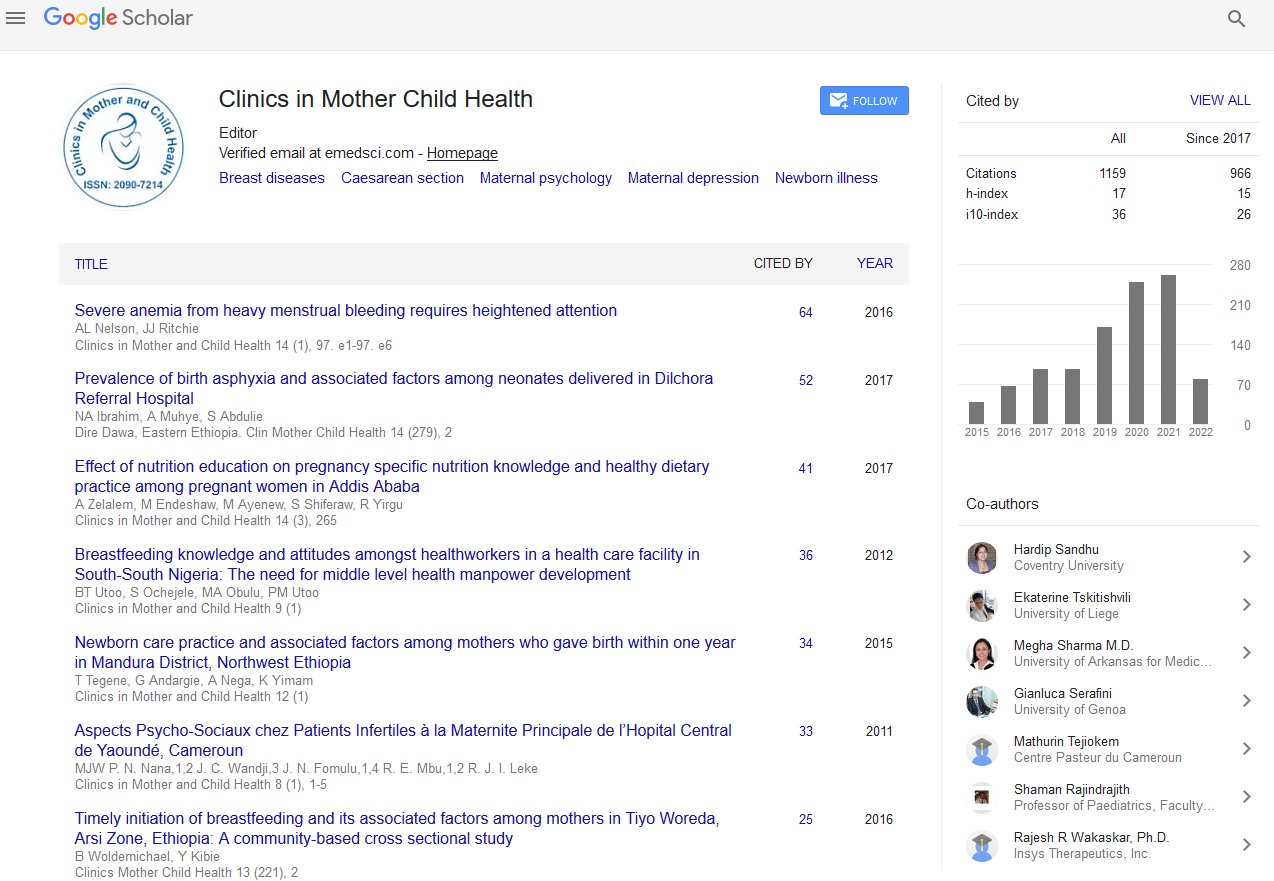Indexed In
- Genamics JournalSeek
- RefSeek
- Hamdard University
- EBSCO A-Z
- Publons
- Geneva Foundation for Medical Education and Research
- Euro Pub
- Google Scholar
Useful Links
Share This Page
Journal Flyer

Open Access Journals
- Agri and Aquaculture
- Biochemistry
- Bioinformatics & Systems Biology
- Business & Management
- Chemistry
- Clinical Sciences
- Engineering
- Food & Nutrition
- General Science
- Genetics & Molecular Biology
- Immunology & Microbiology
- Medical Sciences
- Neuroscience & Psychology
- Nursing & Health Care
- Pharmaceutical Sciences
Abstract
Biological Development and the Normal Voice in Childhood
Mette Pedersen, Anne B Alexius Agersted and Bilal Hussain Akram
The voice in musically trained boys and girls was investigated with phonetograms and fundamental frequency in running speech during reading of a standard text (F0). The methods were based on
• Phonetography of voice profiles
• Combined electroglottographic and stroboscopic examination of the movements of the vocal folds in speech.
The voice analysis was compared with measurements of
• Pubertal stages in youngsters
• Hormonal analysis of all androgens and in girls also estrogens
The phonetograms measured the total pitch and loudness range as well as an area calculation in measured semitones × dB(A). An evaluation was made of the electroglottographic curve, combining it with a marking of the stroboscopic phases of the vocal folds on the curve with a photocell. The electroglottographic single cycles were stable and 2000 consecutive electroglottographic cycles were measured in 48 boys and 47 girls, aged 8-19 years, in order to measure fundamental frequency in a reading situation.
Individual and average phonetograms for sopranos, altos, tenors and bassos were examined. The yearly change of phonetograms showed a correlation to total serum testosterone of r=0.72 in the boys, and serum estrone of r=0.47 in the girls.
The change in fundamental frequency (F0) in puberty was analyzed in 48 boys. Single observations of the fundamental frequencies showed that total serum testosterone over 10 nmol/l serum probably represented values for a boy with a pubertal voice. The voice parameters were analyzed in 47 girls. However, hormonal analysis and pubertal examination was only possible in 41 girls. F0 was only related to estrone r=-0.34 (p<0.05). The increase of estrone and of fundamental frequency range (F0 range) had a predictive value (p<0.05) for the fall of F0 from 256 to 241 Hz in puberty.


